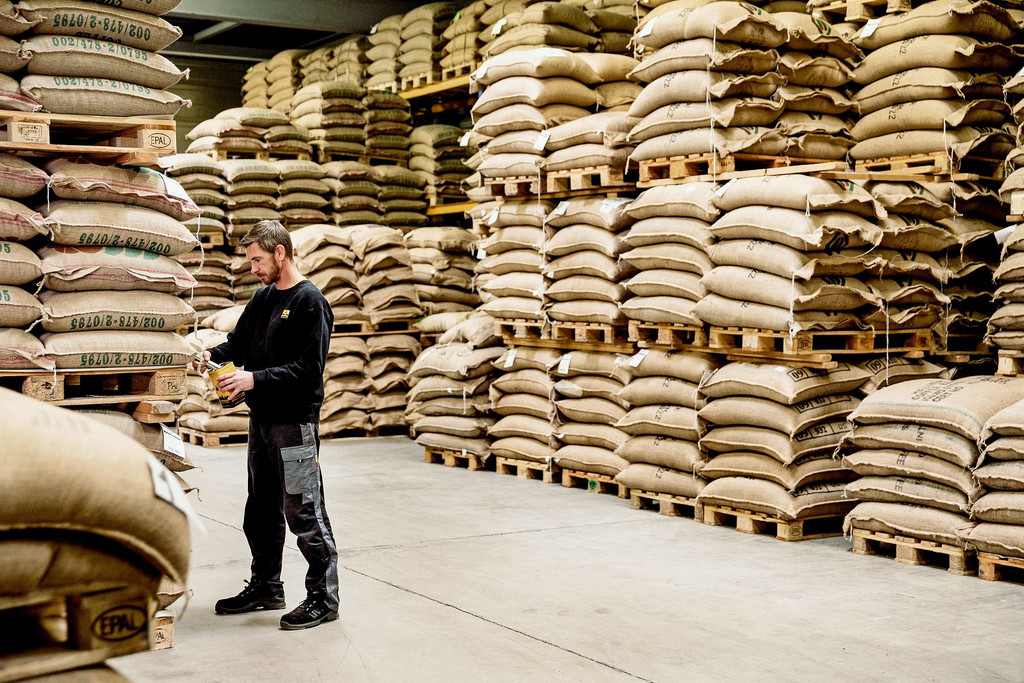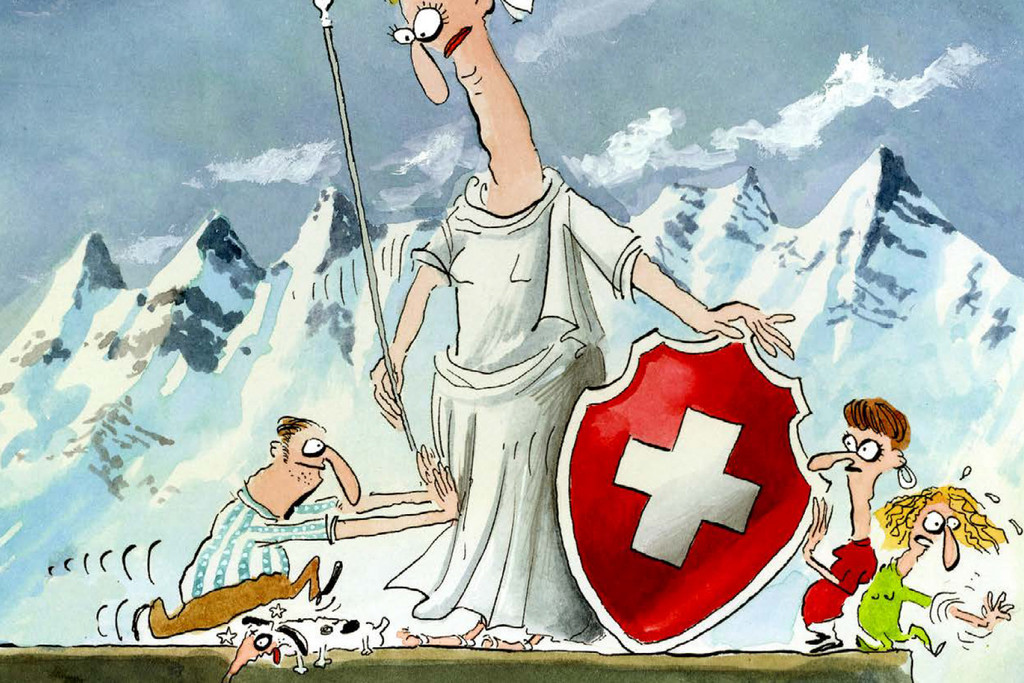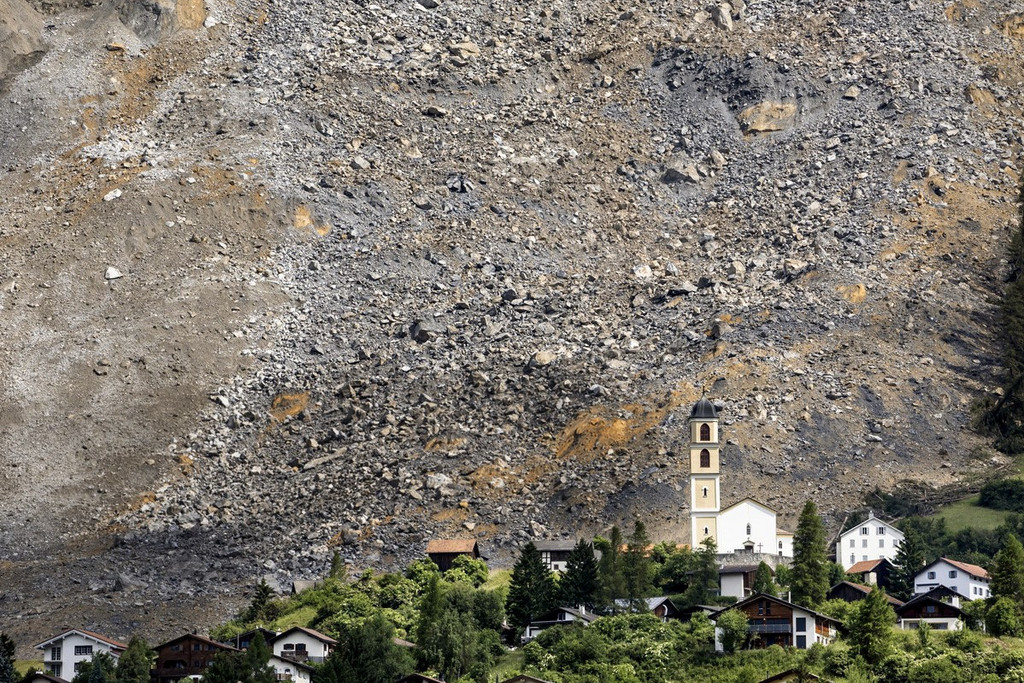“Swiss Review”: Once extinct animals are returning to Switzerland. That has to be good news for you, doesn’t it?
Reinhard Schnidrig: Most certainly. However, the good news began with the introduction of the first Swiss legislation on the forests and hunting in 1876. Switzerland was responding to the major biodiversity crisis of the time. Our forests were being overused and the wildlife overhunted. There were no deer, ibexes, wild boar or roe deer left.
The return of the predators does not come as a surprise to you then?
From a long-term perspective, it is an entirely logical development. Short-term it is remarkable. When Switzerland put wolves under protection 25 years ago, nobody anticipated that they would return within a few years or that we would have to consider how to deal with damage caused by wolves.
Sceptics say that confined Switzerland cannot sustain any large predatory animals. Wolves have more room to roam in the Carpathian Mountains.
The notion that wolves are better suited to Siberian expanses or Carpathian forests is incorrect. Large predatory animals also play a key role in the structure of fauna here. But above all, we share – as part of a family of countries – a common habitat in which we wish to adopt a unified approach to protect the species which have a right to live in their ancestral habitats. This also applies to wolves – if they find a habitat in Switzerland, they have a right to live there.
Not everyone sees it that way.
Think about it on a small scale. What would happen if farmers in Fricktal suddenly declared that wild boar would be better suited to regions where fewer crops susceptible to damage are grown. How could this unreasonable request be conveyed to the wild boar? What about the other farmers? The example shows that we require a unified approach to the protection and management of wild animals that roam extensively and can potentially cause damage.
Could the demand for an “alpine region with no large predators” not actually be met then?
This demand is illusory. This option no longer exists. If we were to decide to keep Switzerland free of large predatory animals, such a proposal could not be implemented. The animals would come in any case. Those who hold out this illusion are acting unfairly towards our sheep farmers: We have to help them to change their mindset and, in their own interests, come to terms with the wolf staying.
Many people are simply terrified of wolves, though.
Throughout human history wolves have been met with either adoration or fear and hatred. The mythology masks the experience that people and wolves actually coexist really well. The wolf clearly also always represents a certain wildness. We definitely move differently and more carefully when we cross a landscape where we know large predators live.
So, Switzerland should become wilder to teach us humility?
The primitive nature of wild landscapes contrasts starkly with the almost acid green that is found in many parts of Switzerland. From this perspective, we need the wild. The large predators not only convey a sense of wilderness, they also remind us of where we come from.
So, where is that then? From forests full of snarling beasts of prey?
We can look back on one and a half million years of human history. We have only been farming the land and living in towns for 10,000 years. That is a tiny fraction. We have lived through most of our history with wild animals, fearing, revering, hunting and eating them. Mankind’s behavioural repertoire emerged in that world, not in the digital age.
You think in large spans of time. What do you see when you look forward a mere 50 years?
The habitats of wolves and deer will expand because man will abandon certain areas. Wolves and lynxes will populate our country on a fairly widespread basis. I’m not sure about bears. The adventure of the bear has only just begun. There will be more vultures, beavers and otters.
That would practically complete the indigenous animal family?
In 100 years from now Switzerland will only be missing a few animals from the period when Europe was wild. There is little chance of the moose returning, though. They would clearly not find the extensive river landscapes. The reappearance of the bison is also unlikely. But we can anticipate seeing the jackal.
Excuse me? Is the jackal part of Switzerland’s fauna?
As far as the jackal is concerned, we’re talking about a “natural expansion of its area”. This is related to climate change and the lengthy absence of the wolf. The jackal is expanding its territory from south-eastern Europe into the area north of the Alps. It will soon enrich Switzerland, too.
Interview: Marc Lettau
Picture Wildlife biologist Reinhard Schnidrig, head of the wild animals and forest biodiversity unit at the Federal Office for the Environment, provides an insight into the habitat of predatory animals and their coexistence with humans











Comments
Comments :
En quoi le loup participe au succès du tourisme, de l'agriculture, de la chasse, de la sécurité des enfants, de la régulation des sangliers (ils s'en prennent très intelligemment aux proies sans défense), du PIB, ou d'autres intérêts vitaux de la population de la Suisse? Nos aïeux avaient déjà de bonne raisons de l'éliminer de notre pays!